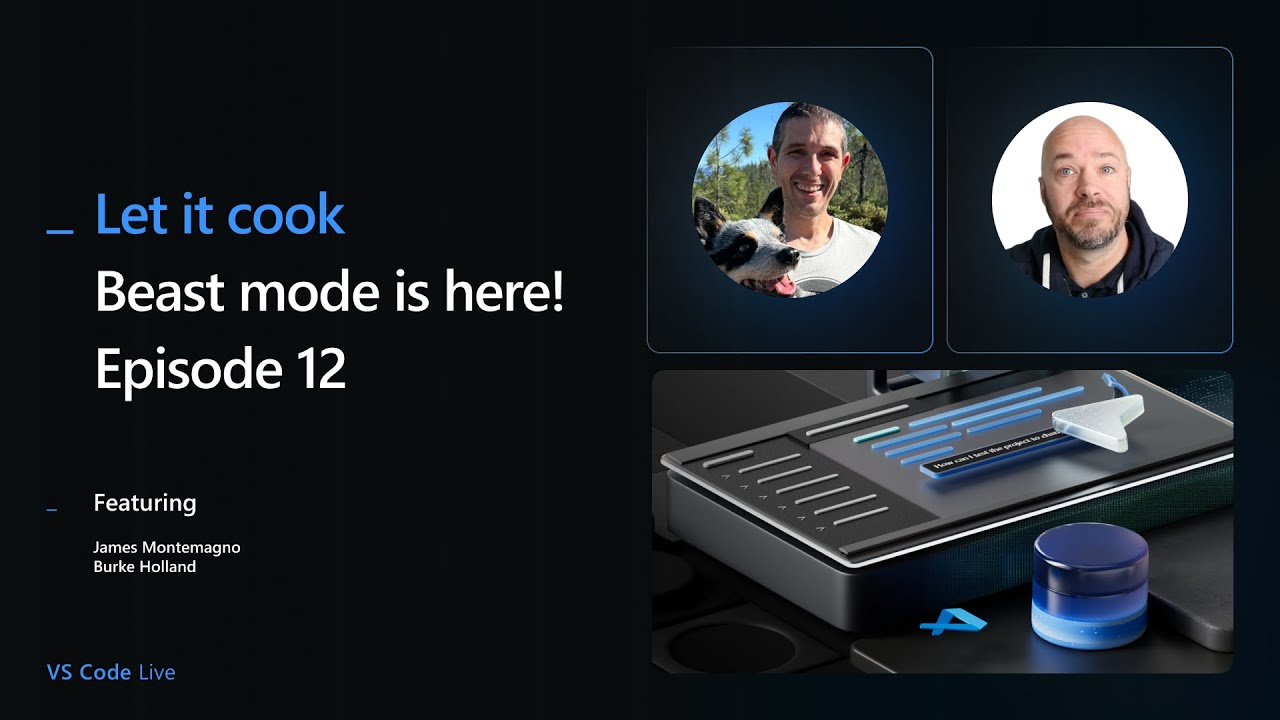In this episode of “Let It Cook,” James Montto Magagno introduces the new Beast Mode feature in VS Code, which leverages GPT-4.1 and GPT-5 models to enable advanced AI-assisted workflows like deep code analysis, documentation generation, and project-specific task management. He demonstrates its practical applications, customization options, and integration within the coding environment, emphasizing collaborative AI use and encouraging experimentation to enhance developer productivity.
In this episode of “Let It Cook,” James Montto Magagno hosts a deep dive into the new “Beast Mode” feature in VS Code, focusing on its integration with GPT-4.1 and GPT-5 models. The show starts with some lighthearted technical difficulties involving hardware setups and cables, setting a casual tone. James explains that Beast Mode is a custom chat mode designed to enhance the AI assistant’s capabilities by enabling it to perform more complex workflows, such as fetching web pages, deeply investigating codebases, and creating detailed to-do lists. This mode is particularly useful for developers who want a more powerful and reasoning-capable AI assistant integrated directly into their coding environment.
James demonstrates how Beast Mode works by showing its ability to analyze API documentation and generate comprehensive markdown files with endpoint details, parameters, and usage instructions. He compares the performance of GPT-4.1, GPT-5, and GPT-5 Mini models, highlighting that while GPT-4.1 is fast, it lacks some reasoning capabilities that GPT-5 models possess. Beast Mode enhances GPT-4.1 by adding reasoning workflows, making it more exploratory and intelligent in handling tasks like recursive data fetching and detailed planning. The episode also covers how users can enable Beast Mode either by importing custom chat modes or by toggling new settings in VS Code Insiders, making it accessible and easy to try out.
The hosts explore the practical applications of Beast Mode beyond documentation generation, such as staging and committing code with Git, remembering project-specific instructions to avoid repeated mistakes, and iterating on complex tasks in small, manageable steps. They emphasize the importance of understanding and reviewing AI-generated code rather than blindly accepting it, advocating for a collaborative workflow between the developer and the AI. The episode also touches on the flexibility of chat modes, allowing users to customize AI behavior and tools according to their specific needs, which can significantly improve productivity and code quality.
James showcases some fun side projects created with GPT-5 Mini, including mini-games that demonstrate the creative potential of AI-assisted coding. He also highlights the new keyboard shortcut feature in VS Code Insiders that allows users to quickly switch between different chat modes, enhancing the user experience. Throughout the episode, there is a strong focus on experimentation, encouraging viewers to try different models and modes to find what works best for their workflows. The discussion includes insights into the ongoing development and tuning of system prompts to improve AI responsiveness and output quality.
Towards the end, James shares resources for setting up Beast Mode, including links to custom instruction repositories and official documentation. He underscores that while Beast Mode was initially designed for GPT-4.1, it is compatible with other models, though the necessity varies depending on the model’s inherent capabilities. The episode concludes with a reminder that effective AI-assisted development requires thoughtful interaction and iteration, and James promises to return with more content in future episodes. Overall, the video provides a comprehensive overview of Beast Mode, its benefits, practical uses, and how it fits into the evolving landscape of AI-powered coding tools in VS Code.
